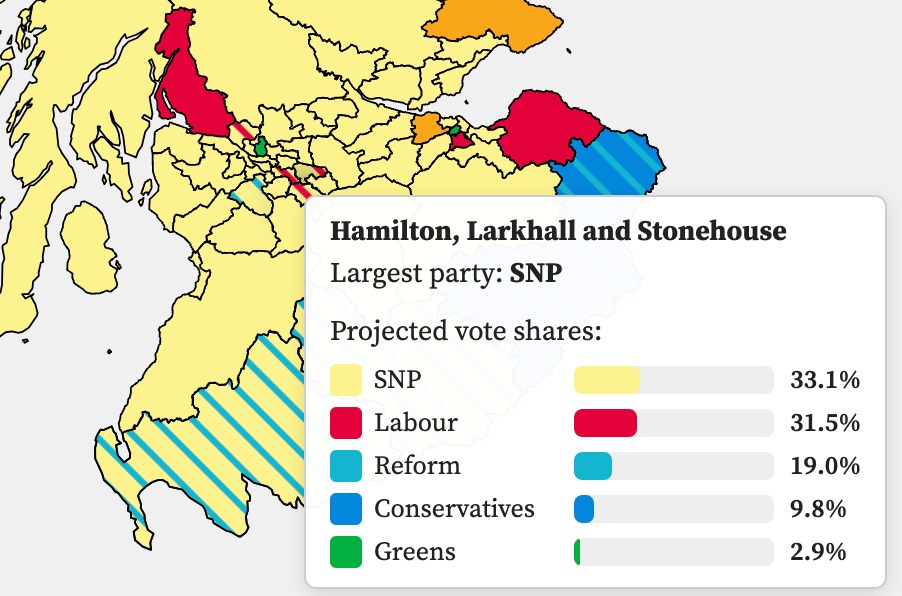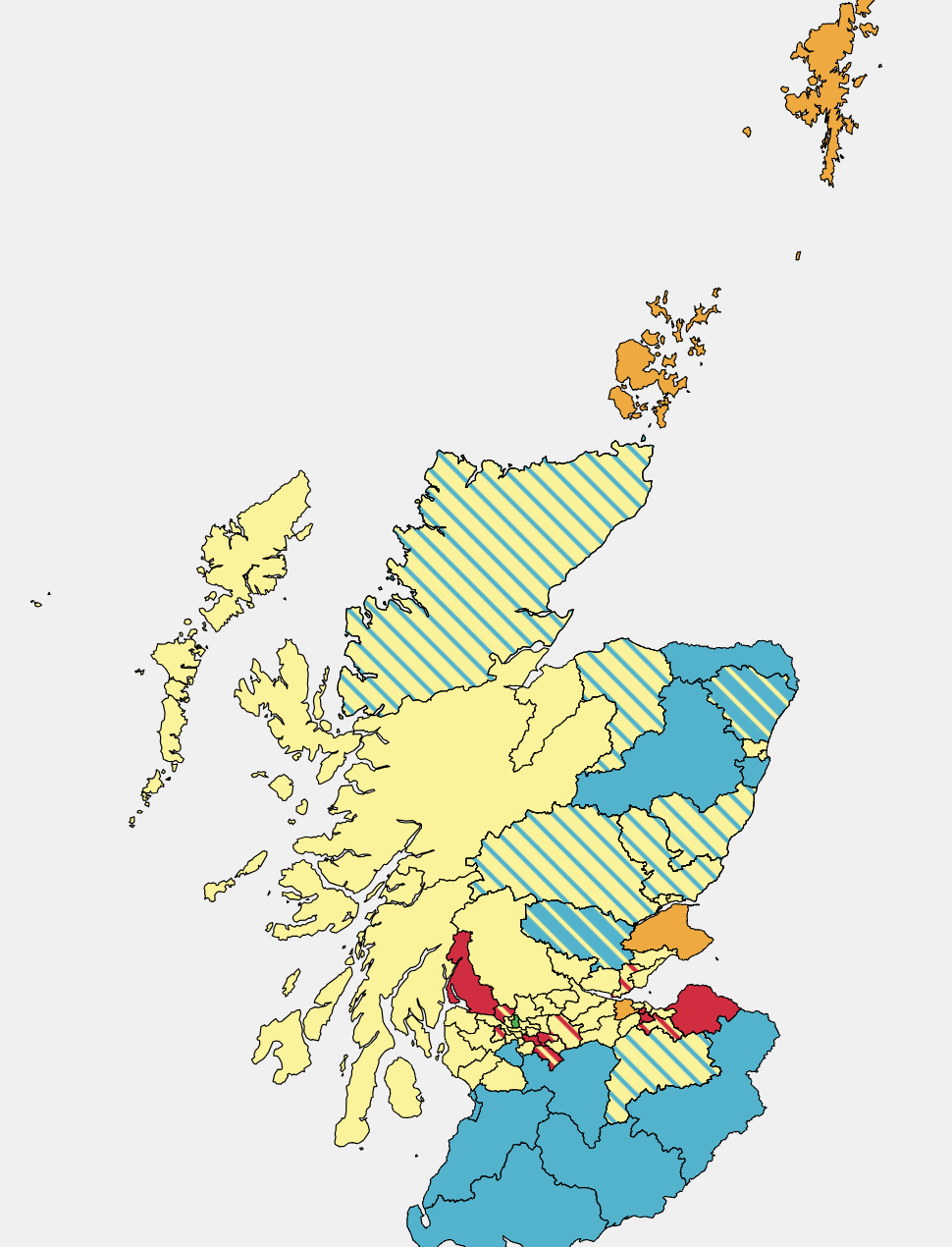A quick experiment to see how Scottish Election 2026 could look if the Hamilton, Larkhall and Stonehouse by-election was replicated nationwide.
The Hamilton, Larkhall and Stonehouse by-election
The Hamilton, Larkhall and Stonehouse by-election was a deeply controversial campaign. Sparked by the untimely passing of the SNP’s Christina McKelvie from cancer, it is the only by-election of the Holyrood term so far and was ultimately won by Davy Russell of Labour in a three horse race.The campaign gained national attention after Reform started pushing ads attacking Labour leader, Anas Sarwar which were quickly labeled ‘racist’ by Labour, the Greens and SNP. Farage denied that his party’s ads were racist and further claimed that Sarwar was “introducing sectarianism into Scottish politics.” Something that both Celtic and Rangers fans will agree was actually there before.
Reform have used the media furore that they created to get even more attention on TV and in print, a path Farage has blazed before. Despite claims of being the underdogs and outsiders, the new party massively outspent all their rivals on advertising - combined. Reform have thrown everything at winning a by-election including Farage making a trip North on Monday.
This constituency had strong potential for an upset. The incumbent SNP leads a government that is well down from its height of popularity and second placed Labour are running a very unpopular government in Westminster. The third placed Conservatives are still in the doldrums, while the Lib Dems, Greens and a variety of others were never much of a factor in the constituency. The smaller parties had a greater potential to split the Labour and SNP vote than to make substantial progress.
Add in low turnout and Reform had a chance.
Reform, with their well funded and media savvy campaign were likely to cease on this opportunity although their on the ground organisation is still in its infancy. That they came close is not a huge surprise, but it is a wake-up call for their opponents.
Inverting the Projection
This result gives us the opportunity to test what would happen this by-election's results were replicated next May.To be clear, the main purpose of our site is to create constituency results based on national input so this experiment but is unreliable for several reasons:
• This is not what the projection was designed for
• Turnout was much lower than we'd expect at a full Holyrood election
• Protest voting is usually higher at by-elections so governing parties (Labour and the SNP) are expected to decline
• Tactical voting can be heightened.
• It's based on results from one constituency out of 73
But, I think it’s a useful experiment anyway.
To do this I played around by inputting different national numbers until the projection in Hamilton, Larkhall and Stonehouse roughly matched up with the by-election results, oh and I had to use Alba as a catchall for ‘Other’ which is obviously imperfect.
For the List, I’ve kept that ratio from list to seat about the same as in the polling, eg. the SNP tend to do a bit better on the constituency ballot, the Greens do a bit better on the list, etc.
The result was the following:
SNP: 49 Seats (30% of Constituency vote)
Reform: 26 Seats (23% of Constituency vote)
Labour: 23 Seats (20% of Constituency vote)
Conservatives: 14 Seats (8% of Constituency vote)
Greens: 10 Seats (6% of Constituency vote)
Lib Dems: 7 Seats (5% of Constituency vote)
The SNP would operate as a minority government, possibly with help from the Greens as their numbers go back to 2007 levels. Despite winning on the night, the splintered unionist vote would benefit the SNP across a wide number of constituencies - this projection gives them 48/73 seats.
Reform would emerge as the main opposition to the SNP. They would be in contention for constituency seats across the Borders, Aberdeenshire West, Clydesdale and Banffshire & Buchan Coast. The experimental projection gives them 12 constituencies, 4 more than Labour.
Tonight was a very bad night for the Conservatives and Lib Dems. There's no real bright spot other than at least no one expected them to win, but a drop on this magnitude is a serious problem just one year out from the election.
Back in reality
This is only assuming the by-election results were replicated nationally, which they very probably won't.
Currently, our projection for May has Hamilton, Larkhall and Stonehouse as a SNP/Labour marginal with Reform 13% further back. As it stands, I’d expect this to be closer to the result next May as Reform and other Farage-led parties have a history of over-performing in by-elections. But, Reform is now a major player and based on polls in England and could win the next general election. If they keep making gains in Scottish polls then they could start making realistic challenges for some constituency seats.

Current Projection of Hamilton, Larkhall and Stonehouse for 2026
